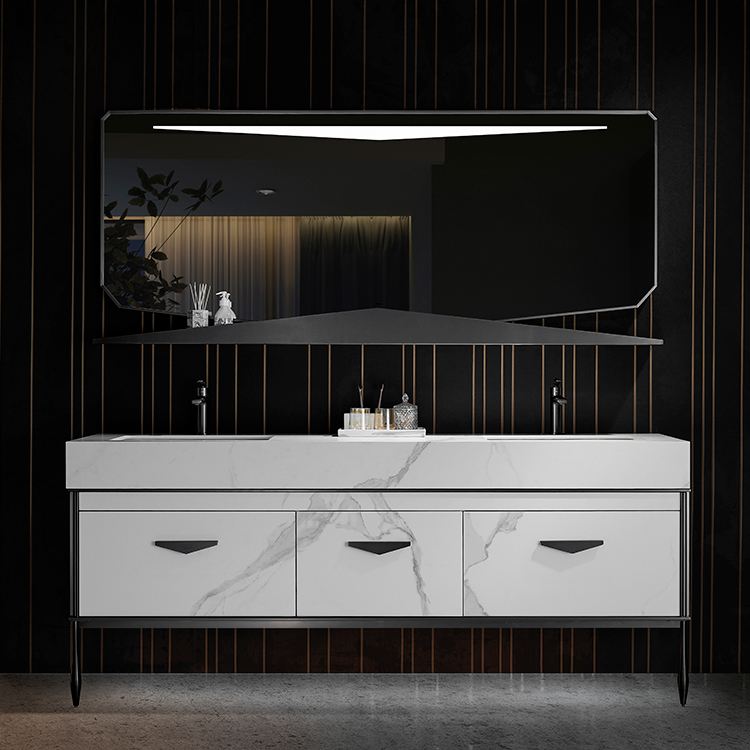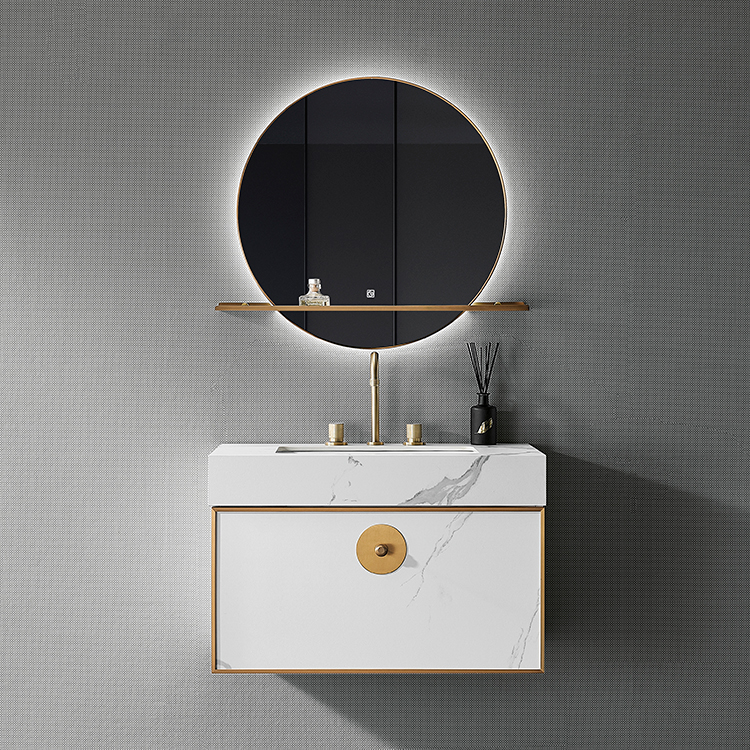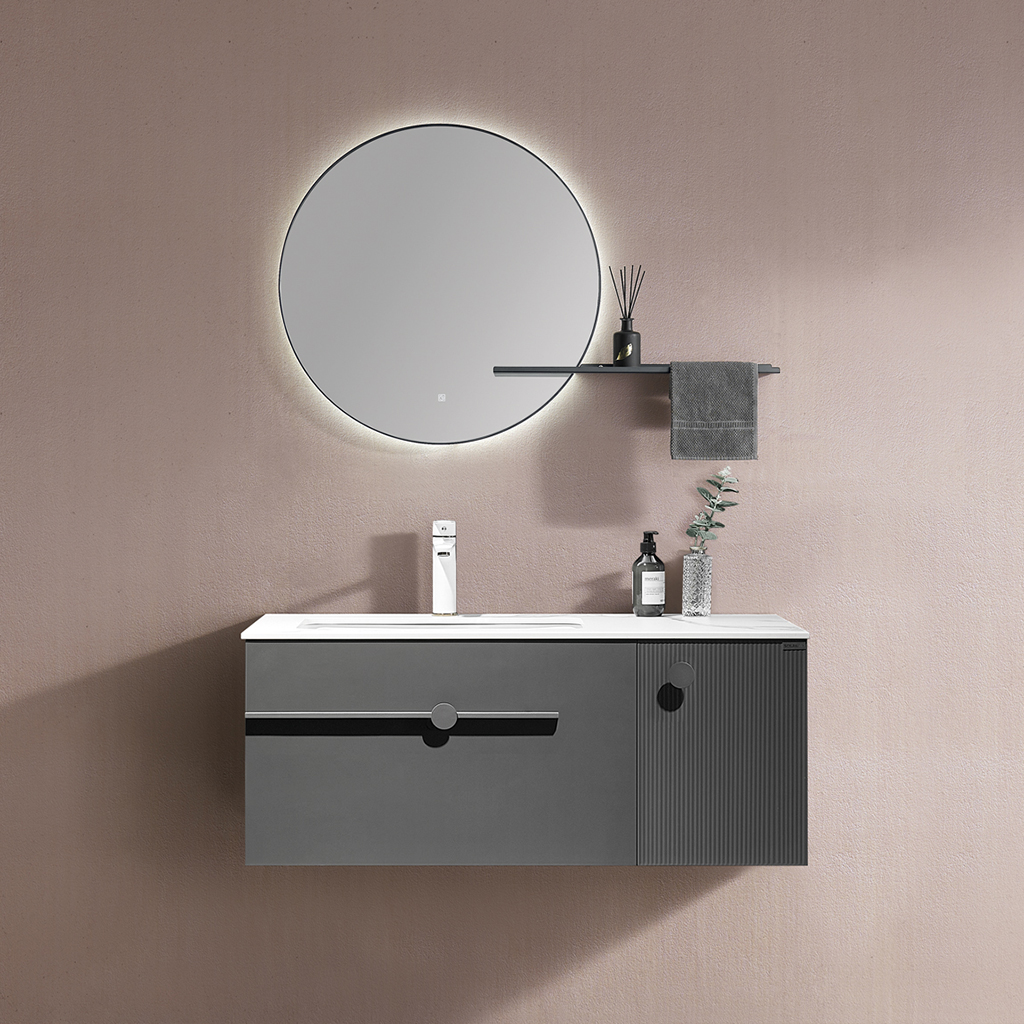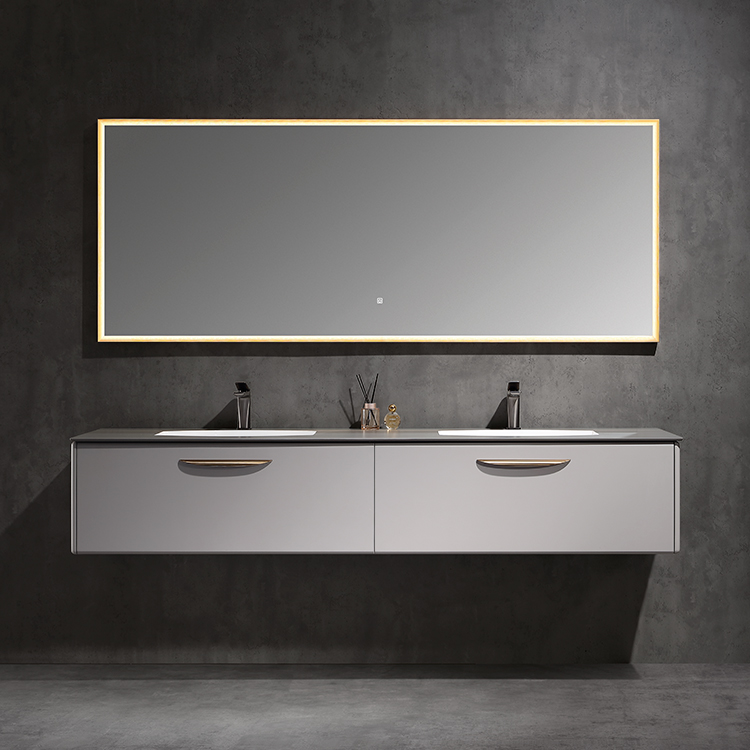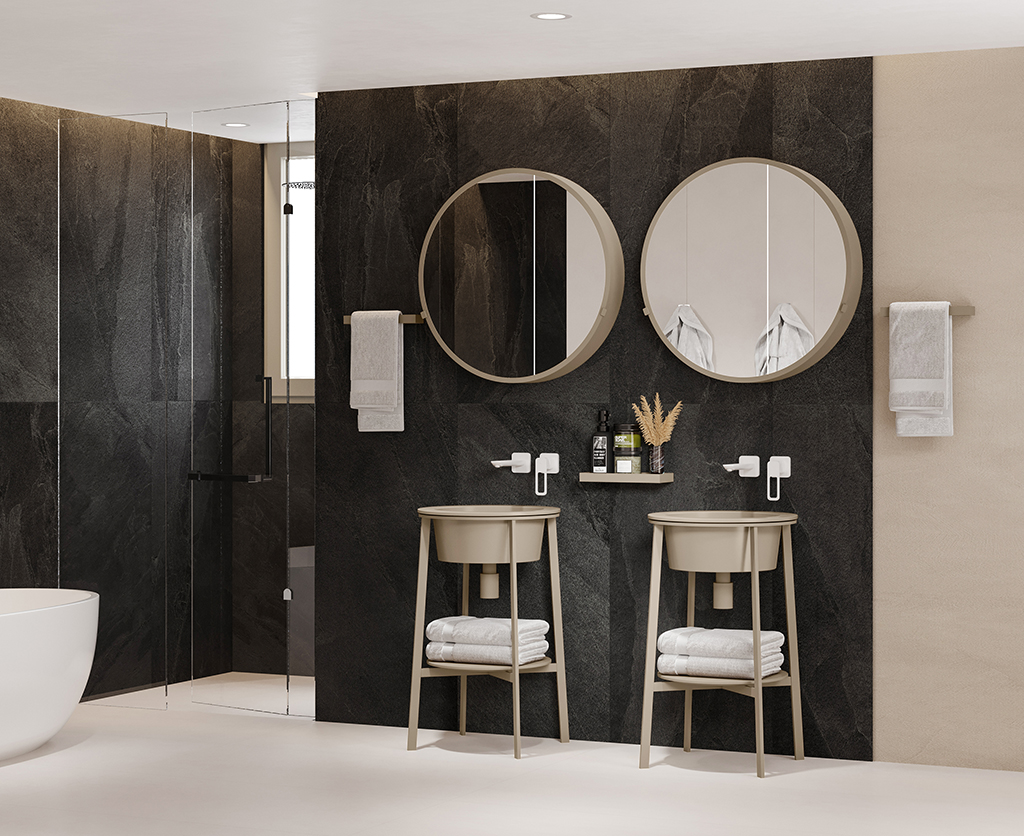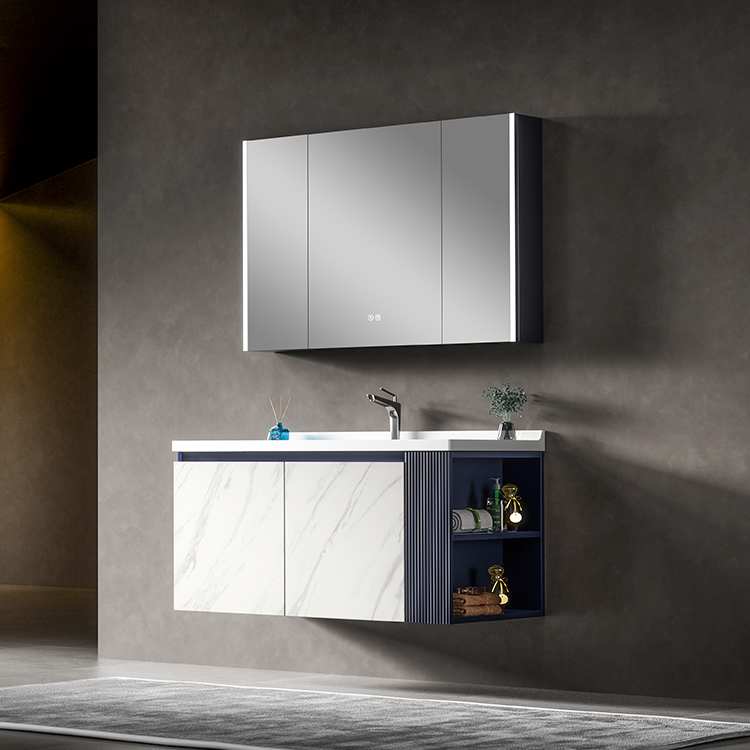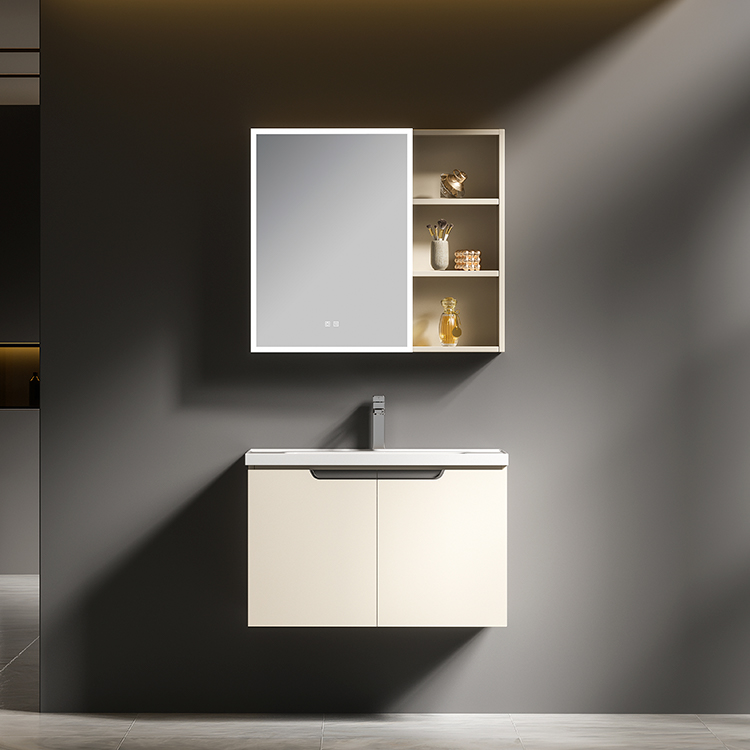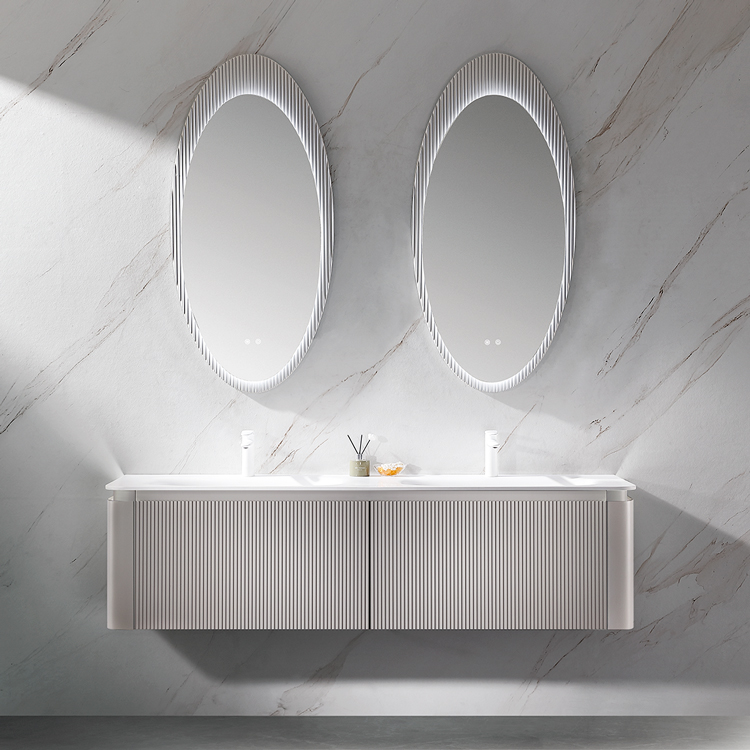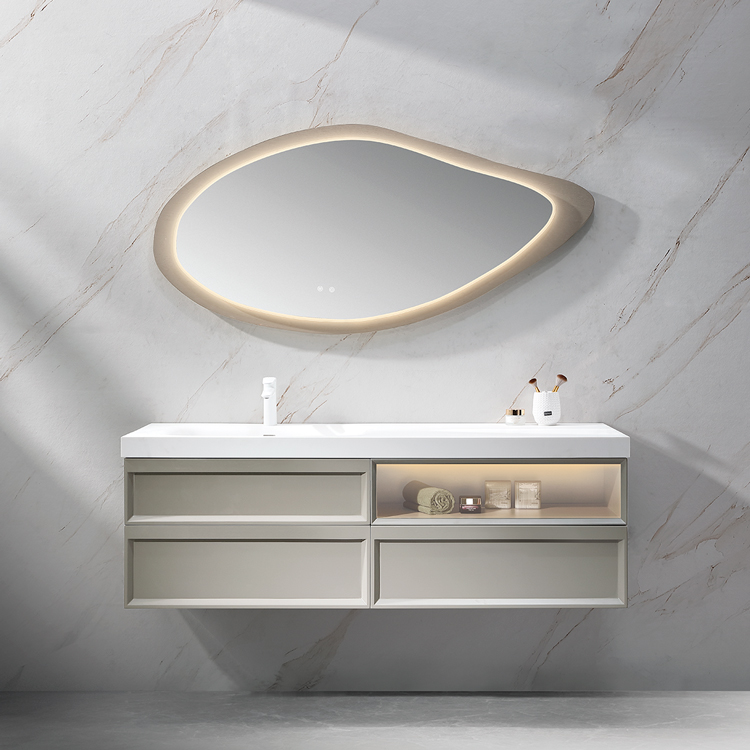Selecting the perfect bathroom cabinet is a crucial decision when it comes to designing a functional and aesthetically pleasing bathroom. A well-chosen bathroom cabinet not only provides essential storage but also contributes to the overall design, complementing elements like the bathroom mirror. With options ranging from wooden bathroom cabinets to stainless steel bathroom cabinets, finding the right fit can be overwhelming. This guide will help you make an informed decision by covering everything from material choices to style considerations.
1. Assess Your Storage Needs
The primary function of a bathroom cabinet is to provide storage. Before you start looking at different styles, consider what you need to store. Do you have many personal care items, cleaning supplies, or extra towels? Assessing these needs will help you determine the size and type of bathroom cabinet that will be most effective for your space.
Types of Storage: Some bathroom cabinets offer a combination of shelves, drawers, and compartments, which can be ideal for storing items of various sizes. A bathroom cabinet with open shelving works well for items that you want to display, while closed compartments are best for less attractive, frequently used items.
Space Utilization: If you have a smaller bathroom, maximizing vertical space is essential. Wall-mounted bathroom cabinets are ideal for compact spaces as they save floor space. A larger bathroom might allow for a freestanding bathroom cabinet with more drawers and shelves.
Tailoring the bathroom cabinet to your storage needs will make your bathroom organized and more enjoyable to use.
2. Choosing the Right Material
Bathroom cabinets are made from a range of materials, each with its unique characteristics, durability, and style. Choosing the right material for your bathroom cabinet is crucial, as bathrooms are high-moisture environments. Popular materials include wood, stainless steel, and other engineered options.
Wooden Bathroom Cabinets: A wooden bathroom cabinet brings warmth and a classic look to the bathroom. Solid wood and engineered wood options like MDF (medium-density fiberboard) with a water-resistant coating are common choices. However, wooden bathroom cabinets require proper sealing and maintenance to withstand moisture. They’re ideal for creating a traditional or rustic look.
Stainless Steel Bathroom Cabinets: Stainless steel bathroom cabinets are highly durable, resistant to moisture, and easy to clean, making them a popular choice for modern and minimalist bathrooms. Stainless steel is also resistant to rust and corrosion, which is a significant advantage in a bathroom environment. This material is ideal if you’re looking for a sleek, industrial feel.
Engineered Materials: Laminates and acrylic finishes on bathroom cabinets are also popular for their durability and wide range of colors. These materials are budget-friendly and can mimic the appearance of wood or metal.
Selecting the right material ensures your bathroom cabinet not only matches your style but also withstands daily wear and tear in a humid environment.
3. Style and Design of the Bathroom Cabinet
The style of your bathroom cabinet plays a crucial role in the bathroom's overall aesthetic. From modern minimalist designs to vintage-inspired cabinets, the style should align with other fixtures, like the bathroom mirror and overall bathroom theme.
Modern Minimalism: A minimalist bathroom cabinet usually has a sleek, frameless design and may incorporate stainless steel finishes for a contemporary look. Paired with a frameless bathroom mirror, a stainless steel bathroom cabinet creates a clean, clutter-free appearance.
Traditional Elegance: Wooden bathroom cabinets with intricate details and warm tones fit perfectly in a traditional or rustic-themed bathroom. Paired with a decorative bathroom mirror, a wooden bathroom cabinet brings a sense of timeless charm.
Industrial Style: Industrial-style bathrooms often feature raw materials, such as stainless steel bathroom cabinets, paired with exposed brick or dark accents. An industrial bathroom cabinet typically has clean lines and simple hardware.
Choosing a style that complements the bathroom mirror and other elements will create a unified look that enhances the overall atmosphere of your bathroom.
4. Bathroom Cabinet Types: Wall-Mounted vs. Freestanding
Selecting the type of bathroom cabinet that fits your space and layout is key. The two main options are wall-mounted and freestanding cabinets, each with its advantages.
Wall-Mounted Bathroom Cabinets: Wall-mounted cabinets are ideal for small bathrooms as they save floor space and provide a modern look. A wall-mounted stainless steel bathroom cabinet can enhance a modern bathroom, creating a sleek appearance that’s easy to clean. This type of cabinet is also often paired with a bathroom mirror cabinet for added storage.
Freestanding Bathroom Cabinets: Freestanding cabinets are larger and typically offer more storage space. They’re ideal for bigger bathrooms where space isn’t an issue. A wooden bathroom cabinet with multiple drawers can add a classic look and provide ample storage.
Choosing between wall-mounted and freestanding bathroom cabinets depends on your bathroom’s layout and storage needs.
5. Considering the Bathroom Mirror and Cabinet Pairing
The bathroom mirror and cabinet should work together harmoniously to create a cohesive design. When selecting a bathroom mirror, consider how it complements your bathroom cabinet.
Matching Styles: For a modern bathroom with a stainless steel bathroom cabinet, a frameless bathroom mirror can complete the minimalist look. Conversely, a rustic bathroom mirror with a wooden bathroom cabinet adds charm to a more traditional setup.
Integrated Mirror Cabinets: Some bathroom cabinets come with built-in mirrors, which are perfect for smaller bathrooms where space is limited. A mirror bathroom cabinet combines storage and functionality, especially useful in a compact bathroom where a separate bathroom mirror might take up valuable wall space.
The right combination of bathroom mirror and bathroom cabinet can enhance the overall look and feel of the bathroom, adding both style and functionality.
6. Choosing the Right Finish for Your Bathroom Cabinet
The finish on your bathroom cabinet impacts the look and durability of the cabinet, so choose one that fits both your aesthetic preference and practical needs.
Glossy Finishes: High-gloss finishes, often found on stainless steel bathroom cabinets or laminate cabinets, provide a modern look and are easy to clean. Glossy finishes also reflect light, which can make a small bathroom feel more spacious.
Matte Finishes: A matte finish on a wooden bathroom cabinet can bring a warm and natural look to the bathroom. However, matte surfaces may require more frequent cleaning to avoid visible fingerprints or smudges.
Natural Wood Finishes: Natural wood finishes bring warmth to the bathroom and are ideal for creating a cozy, traditional feel. However, they require proper sealing to prevent water damage over time.
Choosing the finish carefully can elevate the look of your bathroom cabinet and ensure it remains beautiful and functional for years to come.
7. Bathroom Cabinet Hardware and Accessories
The hardware and accessories you choose for your bathroom cabinet add the finishing touch and can make a big difference in its usability.
Handles and Knobs: Stainless steel handles pair well with a modern stainless steel bathroom cabinet, while brass or vintage-style knobs can enhance a wooden bathroom cabinet in a traditional setting.
Soft-Close Hinges and Drawers: Soft-close hinges prevent doors and drawers from slamming, providing a quieter experience and protecting the bathroom cabinet from damage.
Built-In Lighting: Some modern bathroom cabinets come with built-in lighting, which is especially useful for illuminating the cabinet interior. Paired with a bathroom mirror that also has lighting, this feature can improve visibility in the bathroom.
Selecting quality hardware that complements the style of your bathroom cabinet can enhance both its aesthetic and functionality.
8. Consideration for Moisture Resistance and Maintenance
Since bathrooms are high-moisture environments, it’s essential to choose a bathroom cabinet that can withstand humidity.
Waterproof Coatings: Look for bathroom cabinets with waterproof or water-resistant coatings. Wooden bathroom cabinets should be properly sealed, while stainless steel bathroom cabinets naturally resist moisture.
Cleaning and Maintenance: Stainless steel bathroom cabinets are easy to wipe down, while wooden bathroom cabinets may require occasional conditioning to maintain their finish.
Choosing a moisture-resistant bathroom cabinet ensures longevity and reduces the maintenance effort required to keep it in good shape.
9. Budget and Quality Considerations
Lastly, consider your budget when selecting a bathroom cabinet. Investing in a high-quality cabinet can save money in the long run, as it will be more durable and require less maintenance.
Budget Options: Laminate or MDF cabinets are budget-friendly and come in a variety of finishes. However, they may not be as durable as solid wood or stainless steel.
Higher-End Options: Wooden bathroom cabinets and stainless steel bathroom cabinets are more durable options, offering a luxurious look that can increase the value of your home.
Selecting a high-quality bathroom cabinet within your budget ensures you’re investing in a piece that will last and serve your needs.
Conclusion
Choosing the right bathroom cabinet involves considering storage needs, materials, style, and durability. Whether you prefer a sleek stainless steel bathroom cabinet or a warm wooden bathroom cabinet, finding a cabinet that complements the bathroom mirror and other elements will create a balanced and visually appealing space. By assessing the specific needs of your bathroom, from storage requirements to style preferences, you can make an informed decision that enhances both the functionality and aesthetic of your bathroom.
READ MORE:










